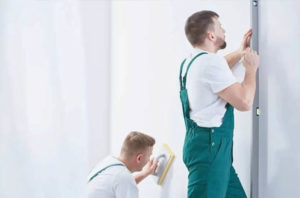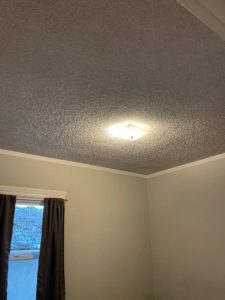If you’ve recently had a water heater leak, then your floor may have some water damage. Once you’ve solved the leak, either by calling us or using our guide to unravel the matter yourself, you ought to check the surrounding floor for water damage.
Wood flooring is typically the foremost susceptible to damage, although water can affect other sorts of flooring also , especially if a little leak has gone unnoticed, or you’ve experienced a very large leak.
Keep in mind, particularly if you didn’t notice your water heater leaking directly , you’ll have mold within the dry-stone wall and/or flooring. Some sorts of mold are often quite toxic in large amounts and will be addressed by knowledgeable .
If you’re taking the right safety precautions, and you simply have a little amount of mold, things are some things that you simply can likely address yourself. make certain to wear gloves, safety goggles, and a dust mask to stop inhaling any of the mold. Mold in more than 10 square feet is that the general rule of thumb on when knowledgeable should be called.
How to Tell if you’ve got Water Damage
All types of flooring are often damaged by water, and worse, the water can seep right down to the sub floor. Identifying whether your floor has any water damage is comparatively easy, as you’ll usually notice signs of warping, buckling, and discoloration. Although, each sort of floor has different tell-tale signs of water damage. When inspecting your floor, search for the subsequent clues:
Hardwood Symptoms
Cupping – Floor planks have dips and raised edges.
Dark Spots – this might be a part of the wood’s natural pattern, although it’s going to even be mold or mildew.
Bulging – Floor planks bubble upwards, creating a “crown” shape.
Buckling – Floor planks are completely faraway from the ground underneath.
Laminate Symptoms
Swelling – Generally at the plank edges.
Warping – The planks are not any longer flat and are cupping or bulging.
Discoloring – might be mold or mildew.
Carpet Symptoms
Discoloration – presumably mold or mildew.
Odor – presumably mold or mildew.
Tile Symptoms
Stains – Any kind of discoloration might be water damage.
Hollow Sound – Tap on the tiles with a coin. An empty or hollow sound means the tiles are loose.
Linoleum Symptoms
Stains – Any kind of discoloration could mean water damage.
How to Repair Water Damage
The first step, altogether sorts of floor repair, is usually to thoroughly dry out the ground . No repairs should be started until the world is totally dry. Use a wet vacuum for giant pools of water, and place fans and dehumidifiers within the room for several days. In some cases, simply drying out the world will fix the damage, and no further repairs are necessary.
There are companies that concentrate on drying out flooring. They often offer services like sanitizing and deodorizing, which may be particularly helpful to stop mold, mildew, and odor.
Hardwood Floor Repair
If only a couple of boards are showing signs of warping, cupping, buckling or separating, you’ll be ready to simply nail or screw them back to place. However, if this does not work, you’ll likely got to purchase matching wood and either replace the individual floor boards, or if necessary, replace the damaged section of floor.
If the damaged section must get replaced , use a saw to chop into the ground , then lift and take away the damaged floor planks with a crowbar .
There is some extent where it’s more cost effective to get rid of the whole a part of the damaged floor and begin over, rather than attempting to repair the world .
For solid wood flooring , you’ll got to replace the boards, nail them to the ground . Then sand the new and old flooring in order that they match perfectly before staining. it’s always best to use a few coats of stain, then numerous coats of polyurethane finish.
It can become very time consuming to exchange the damaged boards, versus quickly tearing them out and starting over. If you’re hiring a contractor to try to to the work for you, have them write up a bid for both repairing the damage and replacement.
Laminate Floor Repair
When moisture penetrates the water resistant laminate finish, there are layers of fabric wanting to absorb the water. The result are going to be swelling and separation to the layers below the laminate finish. When laminate floors become totally immersed with water, like a basement flood, the sole option is typically to exchange the whole floor.
Dry the ground as quickly as possible using fans and dehumidifiers. A damaged laminate floor will begin showing signs after a couple of days.
If repair is important , start removing the boards at the closest wall. a number of the boards could also be ready to be reused, however, any damaged floor boards must get replaced . Again, it’s going to be cost-effective to exchange the whole floor or a minimum of an outsized section.
Carpet Floor Repair
Carpet, as a general rule, can handle a big amount of water. However, it’s critical that it’s quickly dried to stop mold, mildew, and within the case of wool carpets, rot.
It’s a good idea to rent a carpet cleaning machine to extract the water from the carpet, as they have a tendency to be stronger than household models. knowledgeable floor care company is additionally an honest alternative. they typically have powerful equipment which will remove water quickly.
Once your carpet is dry, have it professionally cleaned, sanitized and deodorized. If you discover that the carpet is broken , sometimes alittle section are often replaced without being noticeable. However, it’s more likely that you’re going to got to replace the carpet within the entire room.
Tile Floor Repair
Tile is extremely immune to water, however, water can seep thru the cracks within the grout and damage the subfloor. If the subfloor is broken , the wood will swell and eventually cause the tile and grout to crack, and even raise.
Dry the ground as quickly as possible using fans and dehumidifiers. If you’re confident that you simply r subfloor is okay but notice that you have a couple of loose tiles, use a typical head screw driver to lift the tiles from the ground . you’ll be ready to reuse the tiles, so handle them with care as they will break relatively easily.
Match the grout as close as possible. If you do not have any extra tiles available , it’s always an honest idea to shop for a couple of extra for the longer term . Sometimes, contractors leave a partial box of tile for homeowners.
Vinyl & Linoleum Floor Repair
Both Vinyl and Linoleum handle excess water well. Remove the water by using fans, and increase the temperature on your furnace to assist dry any water which will have seeped into the subfloor.
If you discover that you simply got to replace a neighborhood , use a utility knife to chop out the damaged area, then use a typical head screw driver to pry it off the ground .
Many times it’s possible to reuse the vinyl or linoleum. like the tile floor, your main concern is that the subfloor. The wood may swell with the surplus water, and it could even shrink when dried. Sometimes a damaged section of subfloor must get replaced .
Managing Repair and Replacement Costs
Homeowner’s insurance policies often cover water damage . . . albeit the cause was human error. Contact your insurance broker to gauge the damage. Many policies will cover the expenses of water removal, flooring replacement, subfloor replacement, and even the value of hiring knowledgeable cleaning company to assist prevent future mold.
However, confine mind that your homeowner’s premium may increase. If the damage is serious, it’s going to be well worth the future expense, except for smaller jobs, it’s going to be in your best interest to try to to the work yourself or hire someone out-of-pocket.




